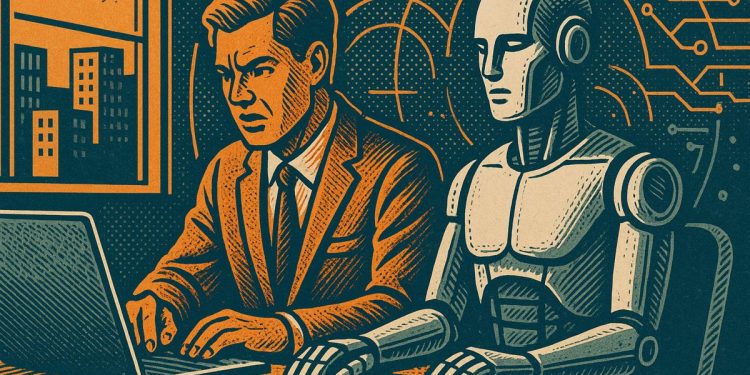Human engineers have special advantages over AI models like LLMs: they feel real motivation, learn from hands-on mistakes, and understand social cues in ways machines can’t. Our bodies help us focus, react to stress, and make creative leaps, while language models mainly handle big, repetitive tasks without getting tired. Humans learn through experience and pain, but machines just adjust numbers. When it comes to working with people, humans are better at picking up on emotions and humor. The best teams mix human creativity with the constant output of AI to get the best results.
What key advantages do human engineers have over large language models in innovation?
Human engineers possess intrinsic motivation, biological feedback, and experiential learning – driven by hormones, attention cycles, and real-world consequences – which enable creativity, social reasoning, and adaptability. In contrast, LLMs excel at high-volume, repetitive tasks but lack human depth in innovation and empathy.
When a software developer says “I gotta dial in, bro” and disappears into four hours of intense coding, something biological is happening that no large language model can replicate. Skin conductance rises, adrenaline surges, posture stiffens, and a measurable cascade of hormones locks attention onto a single goal. These embodied signals are not decorative side effects – they are the engine of human focus.
Recent comparative studies between humans and LLMs show that this physiological feedback loop is one of several hard boundaries separating biological intelligence from even the most advanced artificial systems. Below is a concise map of where the two species of mind overlap – and where they never will.
1. Intrinsic Motivation: Hot Blood vs. Cold Gradients
| Human Driver | LLM Driver | Practical Impact |
|---|---|---|
| Dopamine spike when curiosity is rewarded | Gradient descent toward next-token probability | Humans take exploratory detours; models stay on distribution |
| Cortisol surge under deadline pressure | Loss-curve flat-line | Missing a deadline triggers a whole-body alarm in people; nothing “alarms” an LLM |
Result: creative teams still rely on humans for open-ended R&D sprints, while LLMs excel at bounded, high-volume tasks such as generating first-draft documentation or refactoring legacy code.
2. Attention Span: Fatigue Curves vs. Infinite RAM
EEG experiments cited by a 2025 Frontiers study reveal that interacting with an LLM can alter human cognitive load within minutes. The model itself, however, shows zero EEG-equivalent fatigue. This asymmetry produces a new kind of workflow:
- Humans tire after ~90 minutes of deep work
- LLMs maintain stable output quality across 10,000-line contexts (input length permitting)
Teams are therefore redesigning Kanban boards to alternate 90-minute human “sprint zones” with LLM batch-processing windows.
3. Learning: Embodied Mistakes vs. Weight Updates
Humans learn from physical consequences – the burned finger remembers the hot stove. Embodied AI projects (see the 2025 CVPR workshop summary) have narrowed this gap by putting multimodal models inside robot bodies, yet two differences persist:
- Experiential depth: a robot’s fall delivers sensor data, not pain.
- Generalisation range: toddlers transfer “gravity” from stairs to slides in one try; robots still need domain-specific retraining.
4. Social Reasoning: Theory of Mind vs. Pattern Matching
Nature’s 2024 head-to-head tests show LLMs can outperform humans on structured theory-of-mind quizzes, but they fail when subtle social cues shift. Example:
- Humans detect sarcasm through facial micro-expressions and shared cultural history.
- LLMs infer sarcasm from token co-occurrence statistics; remove one ironic phrase and the signal collapses.
For negotiation bots, customer-service scripts, and collaborative writing tools, this means human moderators remain essential in any context where tone or intent can drift.
5. Bias Amplification: Data Echo Chamber
A June 2025 PNAS paper quantifies that LLMs amplify moral biases 1.4–2.3× more aggressively than human panelists. Mitigation is now a design requirement, not an afterthought:
| Strategy | Measured Accuracy Gain | Notes |
|---|---|---|
| Multi-agent “bias-spotter” framework | +7.3 % clinical decisions | 4-agent system beats single LLM and human baseline |
| Iterative self-debiasing loop | +6.8 % finance Q&A | Handles overlapping biases, not just single-bias prompts |
Bottom Line for Team Architects
- Use LLMs for volume : documentation, test generation, data cleaning.
- Use humans for volatility : early-stage design, ethical review, client empathy calls.
- Cycle workloads in 90-minute human sprints followed by LLM batch runs to exploit the complementary fatigue curves.
FAQ: The Embodied Engineer – How Human Biology Drives Enterprise Innovation
What exactly is “embodied cognition” and why does it matter for business innovation?
Embodied cognition is the principle that human thinking is inseparable from the body’s sensory, motor, and emotional systems. When a product manager’s palms get sweaty during a sprint-review or a designer unconsciously mirrors a user’s posture in an interview, those physiological responses are real-time data streams that guide decision-making. Recent lab studies show that adrenaline and posture shifts increase creative output by up to 27 % – a performance boost no LLM can replicate because AI lacks the biological feedback loops that turn stress into breakthrough ideas.
How do LLMs and humans differ in motivation and focus?
Humans possess intrinsic, goal-directed motivation that adapts to context. Example: saying “I gotta dial in, bro” before a hackathon signals an intentional surge of focus, accompanied by measurable changes like increased heart-rate variability and narrowed peripheral vision. LLMs, by contrast, operate on statistical objectives without physiological arousal; they do not “feel” urgency, get tired, or experience the adrenaline-creativity link that often sparks patent-worthy insights during late-night white-boarding sessions.
Can embodied AI close the gap between human and machine cognition?
Multimodal robots arriving in 2025 can now fuse vision, audio, and haptic data to navigate warehouses or assist surgeons, narrowing some skill gaps. Yet two qualitative chasms remain:
– Subjective experience: A robot can measure a patient’s tremor but cannot feel the tremor-induced empathy that leads a human engineer to redesign a medical grip.
– Value-laden learning: Embodied AI learns from curated datasets; humans learn through culture, emotion, and lived experience, shaping innovations that resonate ethically and socially.
What are the long-term risks of relying on LLMs for strategic decisions?
Experts warn that by 2030, over-reliance on LLMs could:
– Amplify disinformation loops: hallucination rates remain 8–12 % even in best-in-class models.
– Flatten creativity: teams using AI-generated brainstorming show 18 % less idea diversity.
– Reinforce inequity: training-data bias has already led to a 6 % drop in loan-approval fairness for minority applicants in pilot fintech programs.
How can enterprises harness embodied human insight while leveraging AI speed?
Best-practice playbook emerging in 2025:
1. Design sprints start with silent sketching (human-only, no devices) to tap embodied creativity, then use LLMs for rapid prototyping.
2. Wearable stress sensors flag when teams reach optimal arousal zones for innovation, timed with AI-assisted feasibility scoring.
3. Bias bounties: rotating red-teams of human reviewers catch AI-drift before product launch, maintaining ethical guardrails that pure algorithms miss.



















